An orchid is a bright representative of tropical plants that has an unusual root system. It belongs to the family of epiphytic plants and has not only ordinary roots but also aerial ones. So, how to repot an orchid with air roots?

How to repot orchid with air roots
This plant was brought to European countries from regions with a tropical climate. Initially, aerial roots helped the plant to attach itself to tree trunks, rocks, and huge stones. And also made it possible to obtain water and all nutrients from moist air. You can also find more information about orchids and how to repot orchids with air roots.
The special structure of the orchid roots
For most members of the orchid family, the ability to form so-called aerial roots is normal. This is a natural process, not a painful manifestation. In nature, you can often find an orchid with well-formed aerial roots.
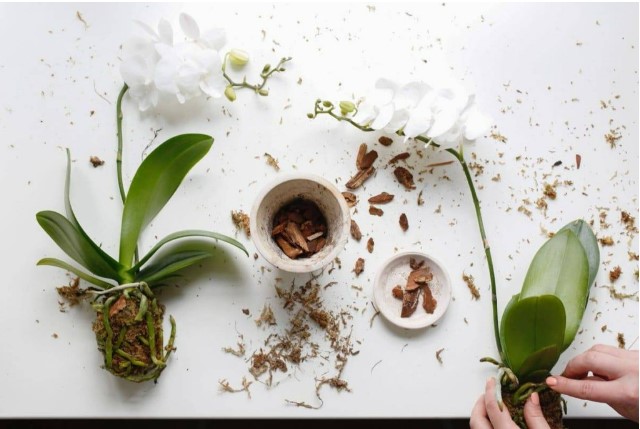
For orchids growing on trees, such a special root system is a necessity, due to which the plant:
- fixed on a tree;
- absorbs nutrients from the nutrient substrate;
- absorbs moisture from the air.
Aerial roots are similar to processes covered with a spongy membrane. Due to its porous structure, the air roots absorb moisture from the air. In the heat and direct sunlight, the sponge coating dries out. So, the plant protects itself from excess fluid loss.

Upon contact with water, aerial roots turn green, characteristic of parts of plants that can participate in the process of photosynthesis. The older the spine, the more dull and faded it looks. In the normal state, above-ground root processes are painted:
- in beige-milky color;
- in all shades of white;
- in silver gray.
There are the vascular bundles under the shell. In them, the plant stores liquid for the leaves.
It is important. Indoor orchid forms aerial roots every 50-60 days.
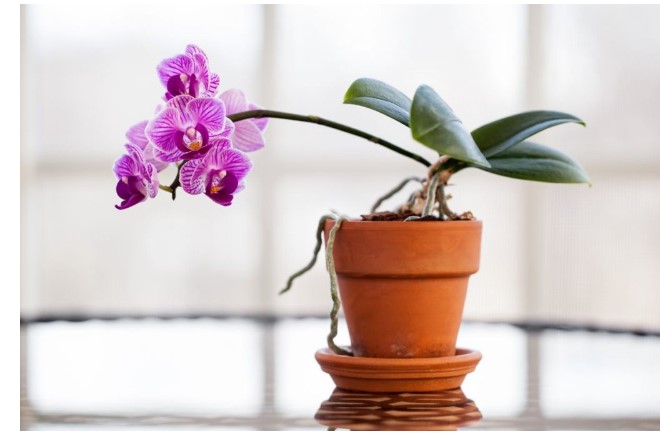
If they are not there, or vice versa, the orchid roots appear too actively, then the plant does not receive the right amount of nutrition or fluid.
Causes of the active form of orchid air roots
To solve the problem of intensive formation of aerial roots, it is necessary to identify the cause that stimulates the plant to form them.

Aerial roots actively grow if:
- the air in the room where orchids grow is too hot and dry;
- excess water stagnates in the potting mix, due to the active formation of aerial roots, the plant seeks to survive;
- the potting mix lacks moisture, the orchid tries to extract water from the air with its air roots;
- the room is too dark, and the growing roots allow the flower to capture more light needed for photosynthesis;
- the soil mixture in the pot was compacted due to improper watering.
The appearance of too many similar orchids with air roots growing at home indicates improper care.
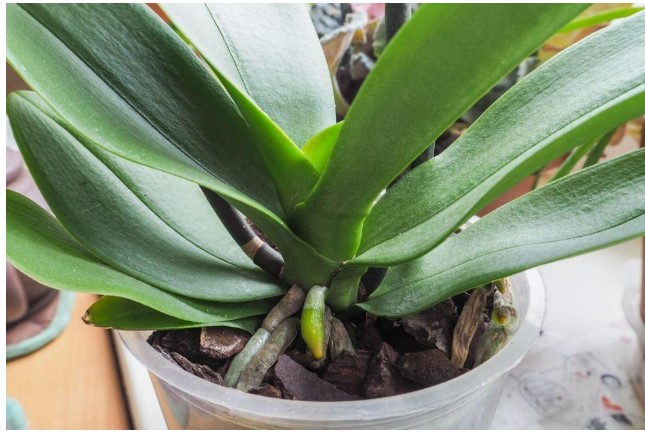
A plant that actively forms aerial roots is quite healthy, it is enough to change the amount and quality of watering, adjust the air temperature in the room and the problem will be solved.
When repotting orchids, what do you do with the air roots?
Beginning flower growers consider the aerial roots of orchids to be extra shoots that must be removed without fail. The appearance of roots in orchids should be an occasion to reconsider the principles of flower care.
Poorly chosen place for an orchid
All that the owner of most orchids has to do is to identify errors and correct the situation by organizing the proper care of the flower. The reason for the growth of the roots may lie in the wrong place for the orchid.
After the alleged cause of the formation of an excessive number of roots has been identified and corrected, you should wait awhile.
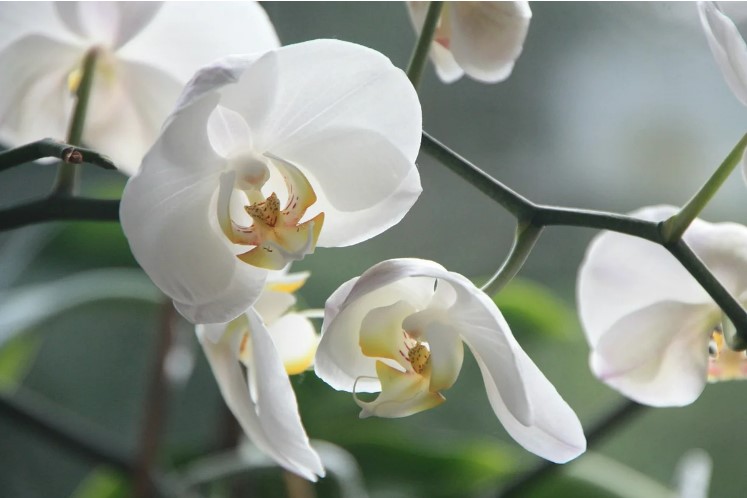
The flower should have 2-3 aerial root processes. If the situation has not changed, it is necessary to continue the search for negative factors that stimulate the plant to the abnormally active formation of roots. Supplementary roots are nothing but the plant’s attempt to solve the problems of lack of food, light, and water.
Unsuitable soil mix
The potting medium can lose its breathability due to improper watering. A potting medium tightly packed into a container injures the roots, preventing them from receiving the necessary amount of air. Due to the newly formed air roots, the plant seeks to improve the situation.
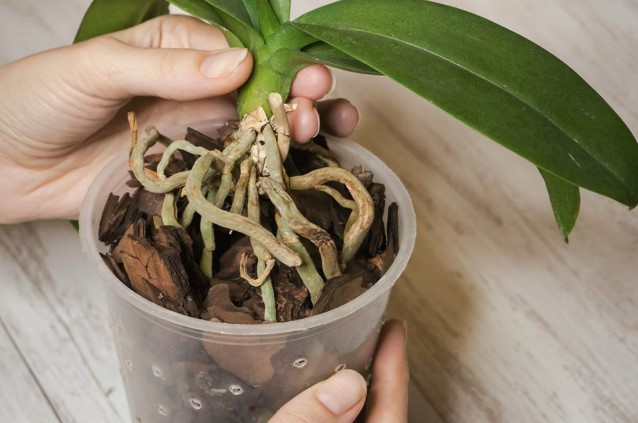
The plant grows, and the old potting medium becomes cramped for it, in addition, the soil mixture is depleted and cannot supply the flower with the right amount of nutrients.
Roots that have grown beyond the container must not be removed. It is easier and more correct to transplant the orchid into a larger pot.
It’s helpful. A few hours before you repot an orchid to another container, it is actively watered.
Wet, depleted soil is easier to shake off the roots. This method allows you to reduce the stress tolerated when you repot an orchid.
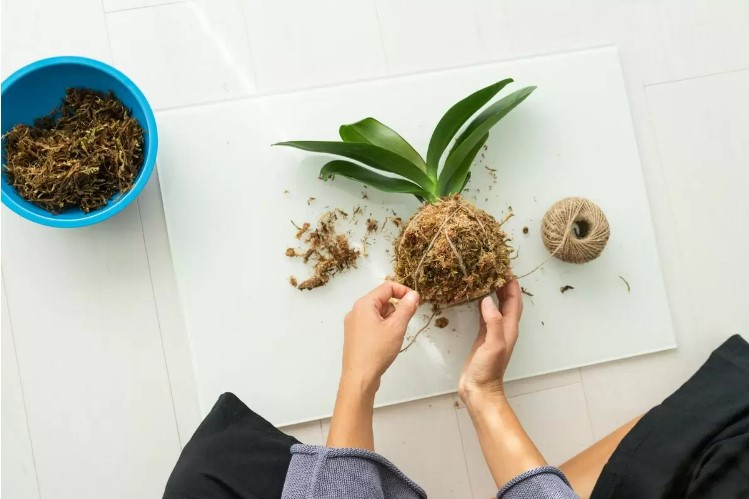
A suitable soil mix consists of:
- sphagnum moss;
- orchid bark (pine, spruce);
- tree branches;
- birch coals;
- leafy manure.
Orchids like soil containing coconut fiber. Small pieces of coconut shell can be used with or instead of pine bark or sphagnum moss. Drainage is poured into a new container, then a small layer of substrate is poured into the bottom, and then the root system of the plant is placed.
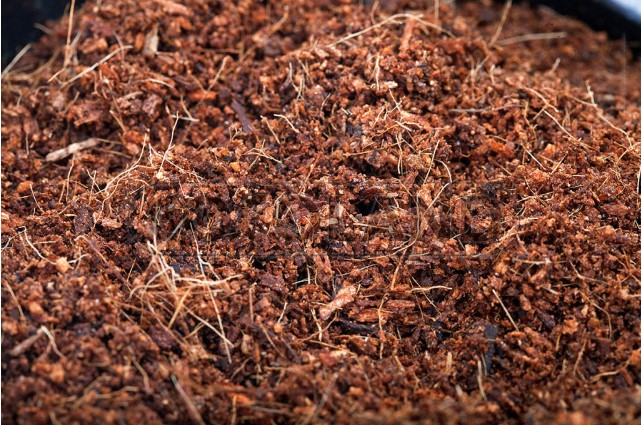
The healthy roots are carefully sprinkled with a soil mixture. It is impossible to compact the substrate. The easiest way to get rid of an air root is by changing the water regime. If after this, the situation has not changed, you can try to transplant the orchid plant into a new pot. You can read about how to grow orchids in water.
Nutrient deficiency
The problem is solved by replacing the soil in the tank. When an orchid grows too fast, you must change the soil along with the pot that has become cramped for the orchid’s roots.
During the period of active growth, the young plant absorbs a large number of minerals and organic matter from the substrate.
The plant seeks to compensate for its lack by aerial roots that absorb useful substances from the air. Regular feeding will help to correct the situation.
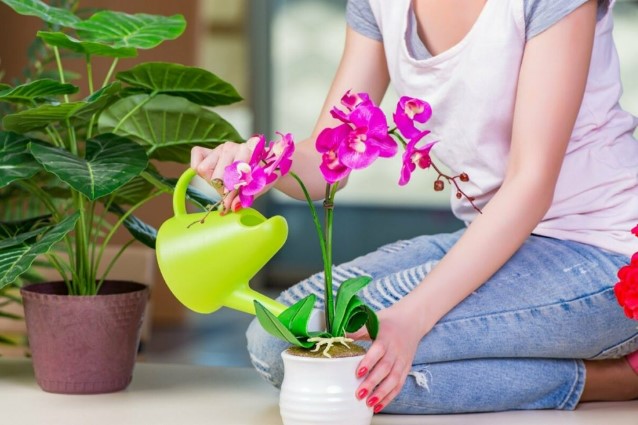
Fertilizers for orchids are produced in the form of liquid concentrates; water-soluble powders; sticks.
Subtleties of care
To get a healthy plant with a moderate amount of air shoots, orchid growers recommend carefully studying all the subtleties of caring for it. You should adhere to the following rules for caring for an orchid:
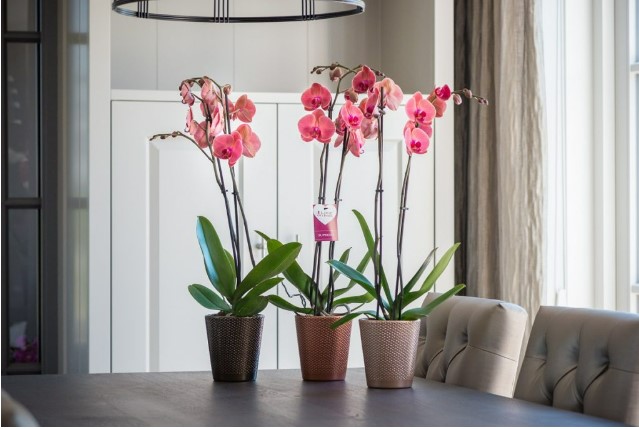
- placing the plant on vertical support without a container with soil;
- repotting orchids into a transparent pot in the absence of the possibility of growing in limbo;
- the use of additional lighting devices;
- protection from direct sunlight; creation of a comfortable temperature regime, which is in the range from +60 to +86℉;
- daily watering in summer and 3 times a week in winter;
- regular application of organic and mineral fertilizers;
- carrying out spring phalaenopsis orchids transplantation.
Plant transplant

Repot an orchid should be carried out according to the following recommendations:
- extracting a flower from an old pot;
- removal of old potting medium from the surface of the root system under a stream of running water at room temperature;
- removal of damaged and dry orchid air roots;
- disinfection of cut points;
- laying drainage materials at the bottom of a new orchid pot;
- place the orchid pot and carefully fill the container with orchid potting mix without compacting it.
In the absence of an underground root system, experienced gardeners recommend extending it.

To carry out this procedure, you need to place the flower in a container with water, in which a root formation accelerator, a little honey, and sugar, as well as a complex of B vitamins, are added.
A prerequisite before growing roots is to remove damaged areas of the plant and disinfect the cut points.
The optimum air temperature in the room is +82℉.
To fill the cells with water on the surface of the leaves, you need to regularly wipe them with an aqueous solution of succinic acid because it is an indispensable assistant in strengthening the immune system and in the formation of a strong root system.
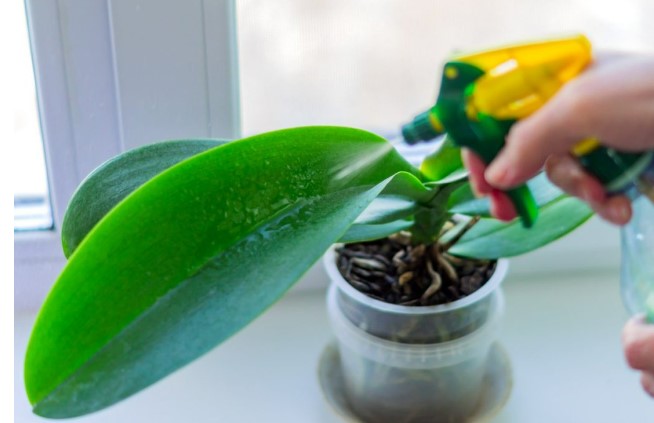
Watering a tropical plant can be done in such ways as:
- shower – washing the whole plant with room water using a shower; after the procedure, aerial roots should have a rich green color;
- immersion – the complete lowering of the pot into a container of water for a short period;
- ordinary watering – moistening the soil by watering it with a special garden watering can;
- spraying is the best way to moisten the orchid with air roots.
Experienced gardeners do not recommend watering in the evening and at night. For irrigation, it is necessary to use rebuilt water with a minimum concentration of mineral salts.
Common mistakes
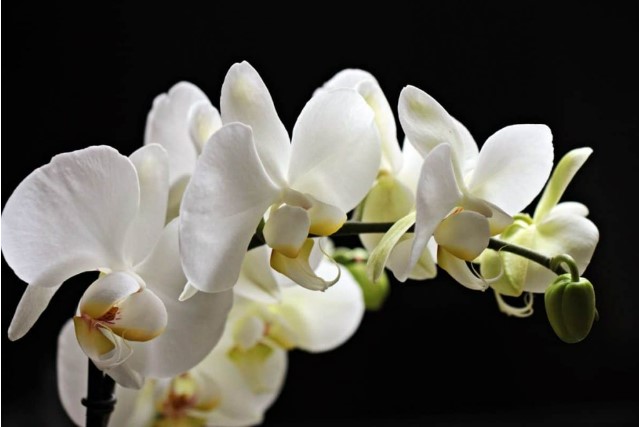
Mistake 1. Do you leave air roots on orchids?
Inexperienced flower growers seek to improve the appearance of the plant, for this, they remove part of the aerial roots. This cannot be done for several reasons:
- the orchid, due to the created roots, seeks to compensate for the lack of nutrients and fluid;
- the cut site becomes an open wound on the plant through which the flower can be infected;
- at the site of the cut, several new processes may appear at once.
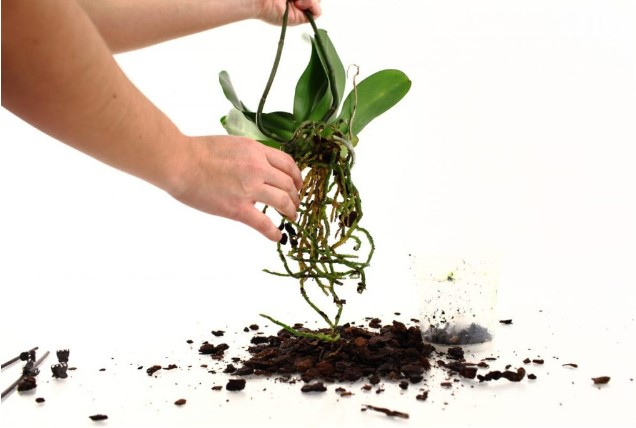
Mistake 2. Can you put aerial roots in soil orchids?
During a flower transplant, by analogy with other indoor flowers, growers try to tightly fill the pot with soil and compact the layer that covers the roots of the orchid. You can’t do this with orchids. This group of plants requires light potting mixes and good oxygen access to the roots.
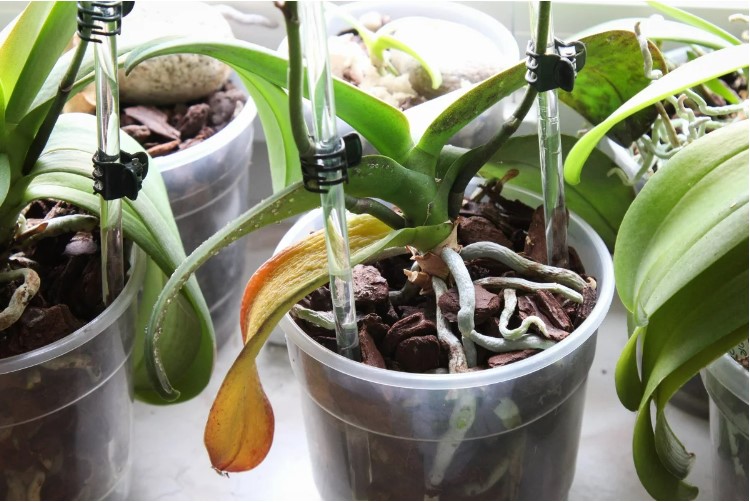
FAQ
Question 1. Can all the aerial roots be placed in a pot and covered with a layer of soil mixture? Answer. This should not be done because this way they can be damaged and infection can be introduced.
Question 2. The underground roots are rotten, can they be removed, provided that the orchid has a well-developed above-ground root part?

Answer. In an emergency, removing the underground roots can help save the plant. Aerial roots will take over all the work of extracting and delivering nutrients.
Conclusion

Transplanting orchids with aerial roots is a fairly simple task. But it is important to regulate the number of such shoots on your plant. Since a large number of aerial roots suggests that, it is possible that plant care is not regular enough and should be reconsidered.
Do you cover air roots when repotting orchids?
No, you should not cover air roots when repotting orchids. Air roots are normal for many orchids, and they play an important role in the plant’s ability to absorb moisture and nutrients from the air. Covering the air roots can lead to root rot and harm the health of the plant. Instead, simply place the orchid in a pot with well-draining potting mix and make sure the roots are not crowded.
Should I cut the air roots off my orchid?
It depends, cutting off air roots is generally fine if they are dead or yellow, but if they are green and plump, they are still actively taking in nutrients and water, so it’s best to leave them intact.
Why is my orchid growing so many air roots?
Orchids produce air roots to absorb moisture and nutrients from the air. A high humidity level or frequent watering can lead to an increase in air root growth.
What do healthy orchid air roots look like?
Healthy orchid air roots are white, firm, and have a spongy texture.
Can orchid air roots get wet?
Yes, orchid air roots can get wet but it is important to not leave them consistently soaking in water, as this can lead to root rot.
Can you put orchid roots directly in water?
No, it is not recommended to put orchid roots directly in water as this can lead to root rot. Orchids prefer to have their roots in a moist, well-draining growing medium.
